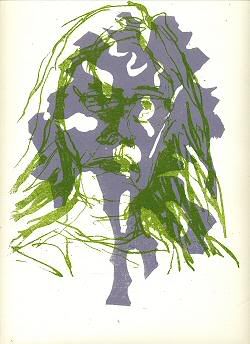Fresh Paint
Wednesday, January 19, 2005
Truitt and Frankenthaler
One of the most enjoyable things about the Milwaukee Art Museum is how well they have installed the collection, in particular the more non-representational works.
Looking at the Anne Truitt sculpture, "Summer Sentinel" (1963-72, acrylic on wood) made me realize that "non-representational" is not the term to use with this object, nor with the Helen Frankenthaler on the wall behind it, "Blue Fall" (1966), for they are both landscapes.
Truitt's is a tower of landscape, two boxes of landscape, a top part slightly overhanging a bottom, slightly narrower and taller box. The top part has a thin (maybe an inch) band of pale blue at the top. The body of the top box is vivid cyan. The bottom box is dark, heavy royal blue, ultramarine or prussian blue, with a dark band around the top as it joins the box above.
I first thought that the darkness of the band was a shadow, the result of the overhanging top section, but walking around the piece (it's about 6 feet tall, maybe taller, or maybe only giving the illusion of tallness), I realized that it's a painted band, intentional in every respect, varying slightly on each side.
I immediately thought of my slices Lake Michigan, only her tower is a 3D chunk of the world. Perhaps sky, perhaps water, isolated and grand.
The Frankenthaler on one wall in view about 15 feet behind it is medium large, with a simple thin pour of blue down the center bordered by tan with creamy white edges. The bottom, a foot or so, is bright yellow. A few splashes of blue paint scatter across the surface. Very simple, but the fall of colors is simple, deliberate, and satisfying, as is its pairing with the Truitt sentinel.
I started thinking about how the installation of objects makes you see them in a particular way, and how a different context might make them different.
Would I like the Truitt as much if it was not at the Milwaukee Museum (a place I adore anyway?) Would I like it if it were stuck in the middle of the floor at the Art Institute so that it was merely irritatingly in the way (they're very good at doing that)?
More about object relationships in the next post.
 This work is licensed under a Creative Commons License.
This work is licensed under a Creative Commons License.








